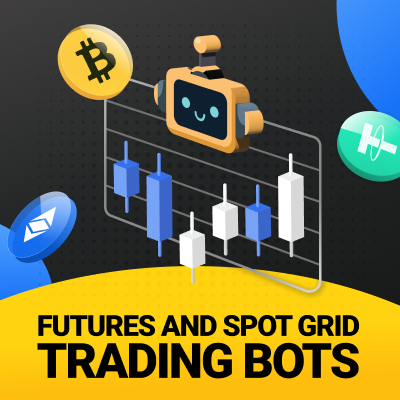Now Reading: Astronomy Labs for High School: 26 Out-of-this-World Ideas
-
01
Astronomy Labs for High School: 26 Out-of-this-World Ideas
Astronomy Labs for High School: 26 Out-of-this-World Ideas

65
Looking up at the stars and wondering about the vastness of the universe isn’t just something people do in observatories. Kids of all ages love space, and in high school, they really start to delve into the universe and its creation through astronomy classes.
Spark student curiosity for science and engage their critical thinking skills through high school astronomy labs. From ideas for individual activities to full labs, we’ve got everything you need to launch into astronomy lessons.
Start with the fundamentals of astronomy
The sky is vast and wondrous, leaving young minds to marvel at it. That’s why many high schools offer required and elective astronomy classes as part of their earth science curriculum. These classes propel students into the scientific method and analysis. These lessons can also lead to winning high school science fair ideas.
Astronomy labs for high school go beyond getting students to interact with the lesson. These classes allow students to analyze data, connect with science concepts, and create explanations for celestial phenomena, which all align with the three-dimensional learning model from the NGSS.
A few fundamental labs to get you started on mathematical representations of orbits and communicating scientific ideas include:
- Observing the sun: Have students construct a device to safely observe the sun. It helps to align students with the importance of safety in high school astronomy projects.
- Constructing a scale solar system: Allow students to construct a solar system model to help them understand one aspect of the vast scale of the universe.
- Mapping out phases of the moon: Introduce orbits by having students map the different phases of the moon.
- Identifying constellations: Introduce the stars by having them chart the different constellations and how they can be used for navigation. You can even delve into the mythology behind the constellations.
- Creating a crater: Show students how craters on the moon are created by having them drop different objects into sand.
- Mimicking the motion of planets: Place a large ball on a trampoline or fabric sheet and show students how other bodies orbit around it. Discuss the force gravity plays in the orbit of planets.
Look to the stars for astronomy labs in high school
Studying astronomy wouldn’t be complete without looking up at the stars. Students need to understand the cycles of stars while also understanding the vastness of the universe. Since your school might not have a telescope readily available for high school STEM activities, incorporate interactive virtual applications into your labs — resources like NASA’s Eyes and Sky Safari can help!
See if any of these simple experiments strike you:
- Classifying the stars: Use a Hertzsprung-Russell (H-R) Diagram to plot a star’s temperature, luminosity, and types.
- Calculating a star’s composition: Have students use spectroscopes to understand light sources and compare them with star data to understand their composition.
- Locating stars: Have students use images of the sky to locate specific stars and planets like Sirius, Vega, Rigel, etc.
- Understanding how stars shift: Use simulation and simple measurements to understand how stars shift over time.
Illustrate star nuclear fusion with food
Show students how stars produce elements with a simple astronomy lab for high school. For visual learners, using common items like marshmallows and popcorn kernels to simulate nuclear fusion can help drive home the process.
Star Nuclear Fusion Lab
By Science Lessons That Rock
Grades: 9th-11th
Standards: NGSS HS-ESS1-3
This lab uses marshmallows and the periodic table to show how fusion works to meld smaller particles into larger ones. It includes teacher instructions, two worksheets, an answer key, and a modified version for middle schoolers.
Demonstrate the life cycle of a star with a virtual lab
Understanding the life cycle of a star is important to grasping key astronomical concepts. Use interactive websites to guide students through the stages in the life cycle of a star, from formation to death.
Life Cycle of a Star Virtual Lab
By Ginger Snaps
Grades: 6th-10th
This nine-page lab uses the Star in a Box website to map the star life cycle. Included are teacher instructions, lab worksheets, and an answer key. Students use the scientific method during the reflection questions.
Light up your high school astronomy lab with sun-specific activities
Everyone knows you can’t look directly at the sun, which is why having proper equipment, like solar viewing glasses and filters, and safety techniques are so important in astronomy classrooms. Encourage students to explore the sun in a safe environment through virtual labs and fun, relatable experiments.
- Creating a sundial: Use a stick and a protractor to help students understand the rotation of the Earth and the motion of the sun. You can also create a cross-discipline lab by having students explore the history of timekeeping.
- Using a prism to view the sun’s visible light: Explore wavelengths of light and the visible colors created by the sun by using a prism.
- Investigating sunspots: With solar glasses and data from NASA, students can explore sunspots and how they affect the Earth’s atmosphere.
- Simulating a solar eclipse: Give students an understanding of how solar eclipses happen by using a flashlight and balls to show how the light is cut off.
- Using the sun’s energy for photosynthesis: Combine astronomy with biology by exploring how the energy of the Earth is pivotal for photosynthesis to happen.
- Exploring the sun’s UV light: UV-sensitive beads can help students see how UV light can be blocked with sunscreen. They can go further into understanding the harmful aspects of the sun that are blocked out by the atmosphere.
Study the electromagnetic spectrum of the sun
Rocket into the fascinating world of the biggest star in our solar system, the sun. Students use observations, hands-on investigations, and historical data to discover the connection between light spectra and other elements with the help of flashlights and candles.
HS-ESS1-3 The Sun & Its Electromagnetic Spectrum Scope Activity
By iExploreScience
Grades: 9th-12th
Standards: NGSS HP-PS1-1; HS-ESS1-1, 1-3
This energetic bundle includes three different activities: Students will engage by observing the spectrum of the sun, explore through studying light sources like flashlights and flames to understand spectra of light, and explain through historical discoveries. The bundle includes a student analysis workbook, a teacher’s guide, and answer keys.
Moving orbit and rotation lab ideas to slide into your planner
Astronomy labs are all about hands-on fun. Since galaxies, planets, and stars are too far away to touch, have students create scale models to help them see our solar system and those beyond it. These models help to solidify the scale of the universe when compared to objects students can see and touch, like basketballs and golf balls.
You can also use apps and software to see how planets affect one another or the movement of their orbits in real time.
Here are a few recommendations to try:
- Creating a model of several planets: Rather than doing all the planets, have students make a model of three planets that are close to one another. They must keep them to scale and study the similarities and differences.
- Comparing gas and non-gas planets: Use data points to compare and contrast how Jupiter and Mercury are different from one another.
- Exploring the greenhouse effect on different planets: Plastic bottles create the perfect atmosphere to see how Venus compares to and differs from Earth. Students can collect and compare data over time.
- Understanding the similarities between orbit and Kepler’s Law: Use PheT’s My Solar System to see how planets orbit in a way that follows Kepler’s Law.
Stay out of the dark with a lab on eclipses
Get your students excited about solar and lunar eclipses. Using reading passages, interactive labs, and questions, your class will learn how an eclipse happens and understand the key astronomical concepts behind it.
Eclipse – Solar and Lunar – Lab Station Activity
By Teach With Fergy
Grades: 5th-10th
Students explore solar and lunar eclipses through nine lab stations. The 18-page bundle includes an answer key and is designed to take an hour as students research, read, explain, and test their knowledge.
Inspect the Earth’s rotation and seasons
Astronomy is more than just stars and the sun: It’s also about the planets and seasons. Have your students explore why the seasons change through an engaging virtual lab. In addition to understanding the seasons, they’ll also explore how seasons are different based on the hemispheres.
Earth’s Rotation & Season’s No Prep Virtual Science Lab Simulation Activity
By Building Brix of Science
Grade: 6th-12th
Standards: NGSS MS-ESS1-1
‘Tis the season to understand how the Earth tilts. Test students’ knowledge of rotation vs. revolution and discuss the difference in the day and night. Students create virtual models of how the Earth tilts through a three-page student worksheet. You’ll also get a three-page teacher worksheet, an answer key, and a digital version.
Tilt your lab in a different direction with a hands-on activity
The angle of sunlight makes a difference. In this hands-on lab, students shine a flashlight to see how light spreads at different angles. They can then graph their data and answer some fun follow-up questions.
Reason for the Season Lab Earth’s Tilted Axis Activity
By Flying Colors Science
Grade: 7th-10th
Standards: NGSS HS-ESS1-4; MS-ESS2-6, 1-1
Dive into sunlight angles and energy distribution through this exciting lab. With minimal prep and everyday materials, this investigation helps students with modeling and scientific argumentation through easy-to-follow instructions, a data table, a printable materials list, and an answer key. Students can also test their knowledge with follow-up questions.
Align your astronomy labs with NGSS and these extraterrestrial topics
While the stars, planets, objects, and sun might be the stars of the show, astronomy includes a plethora of topics for you to explore through labs.
The data is truly endless and the possibilities limitless for labs on:
- Galaxies
- Black holes
- Stellar evolution
- Big bang
- Star composition
- Earth-sun-moon interactions
- Star patterns
- Stellar properties
- Cosmic scale
Help the stars align in astronomy labs for High School with TPT
Brilliant ideas can build radiant minds. Give your students a big bang by adding high school astronomy resources to your curriculum. From astronomical escape rooms to web quests, it’s time to brush off the stardust and add a whole solar system to your teaching techniques.



















:max_bytes(150000):strip_icc()/TUE-Wavebreakmedia-26b12ba467aa4d83a01817469f76f28f.jpg?w=1024&resize=1024,1024&ssl=1)
:max_bytes(150000):strip_icc()/GettyImages-2201364418-9e24dea6f9f74da2b6603b101fb5ff10.jpg?w=1024&resize=1024,1024&ssl=1)
:max_bytes(150000):strip_icc()/GettyImages-2201330196-05ddf2a8dde446a4b1fab515130dac5b.jpg?w=1024&resize=1024,1024&ssl=1)

![How TikTok, Canva, & Other Top Marketing Teams Outperform the Rest [New Data] How TikTok, Canva, & Other Top Marketing Teams Outperform the Rest [New Data]](https://i3.wp.com/www.hubspot.com/hubfs/Featured%20Image%20Template%20Backgrounds-1.png?w=1920&resize=1920,1440&ssl=1)





